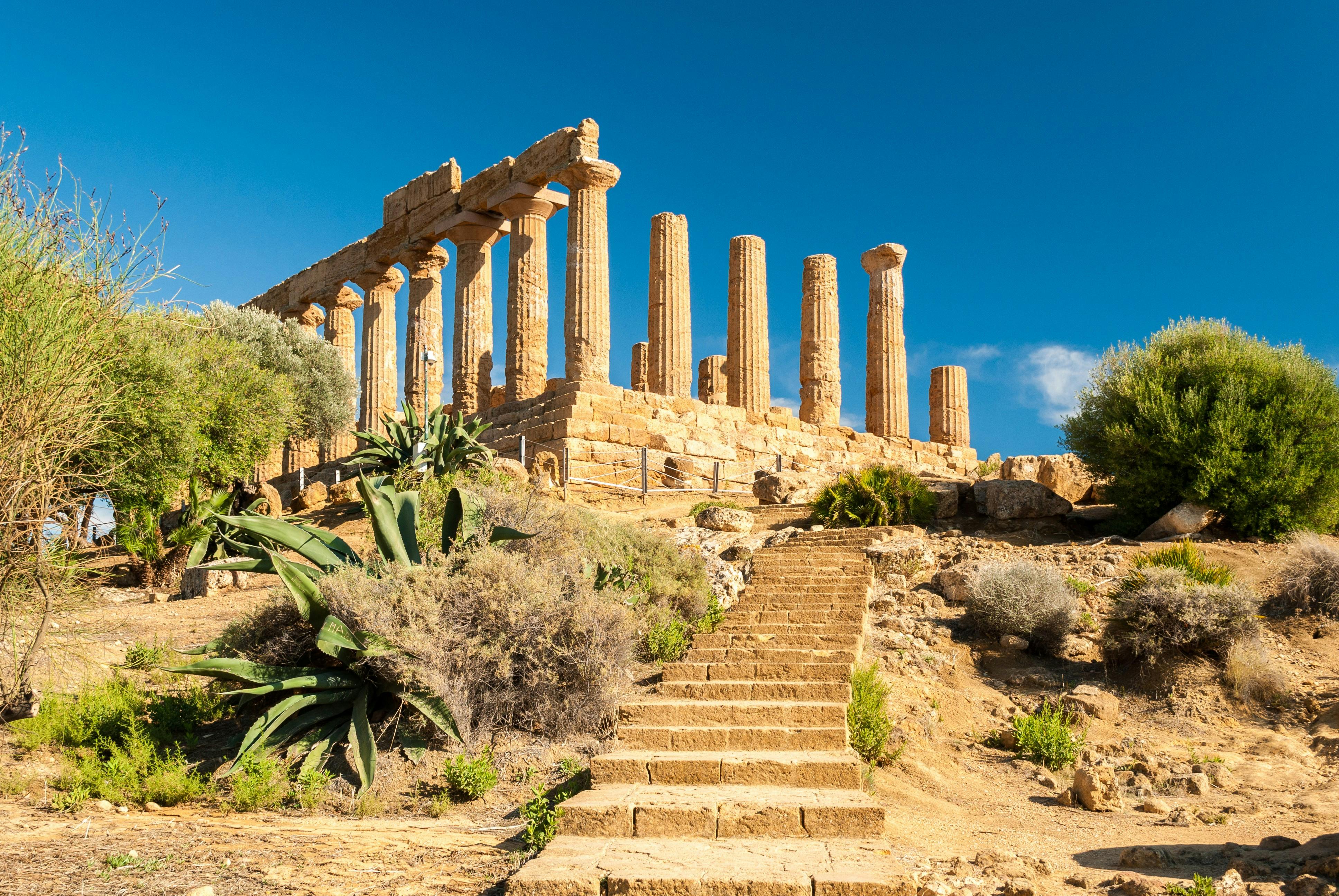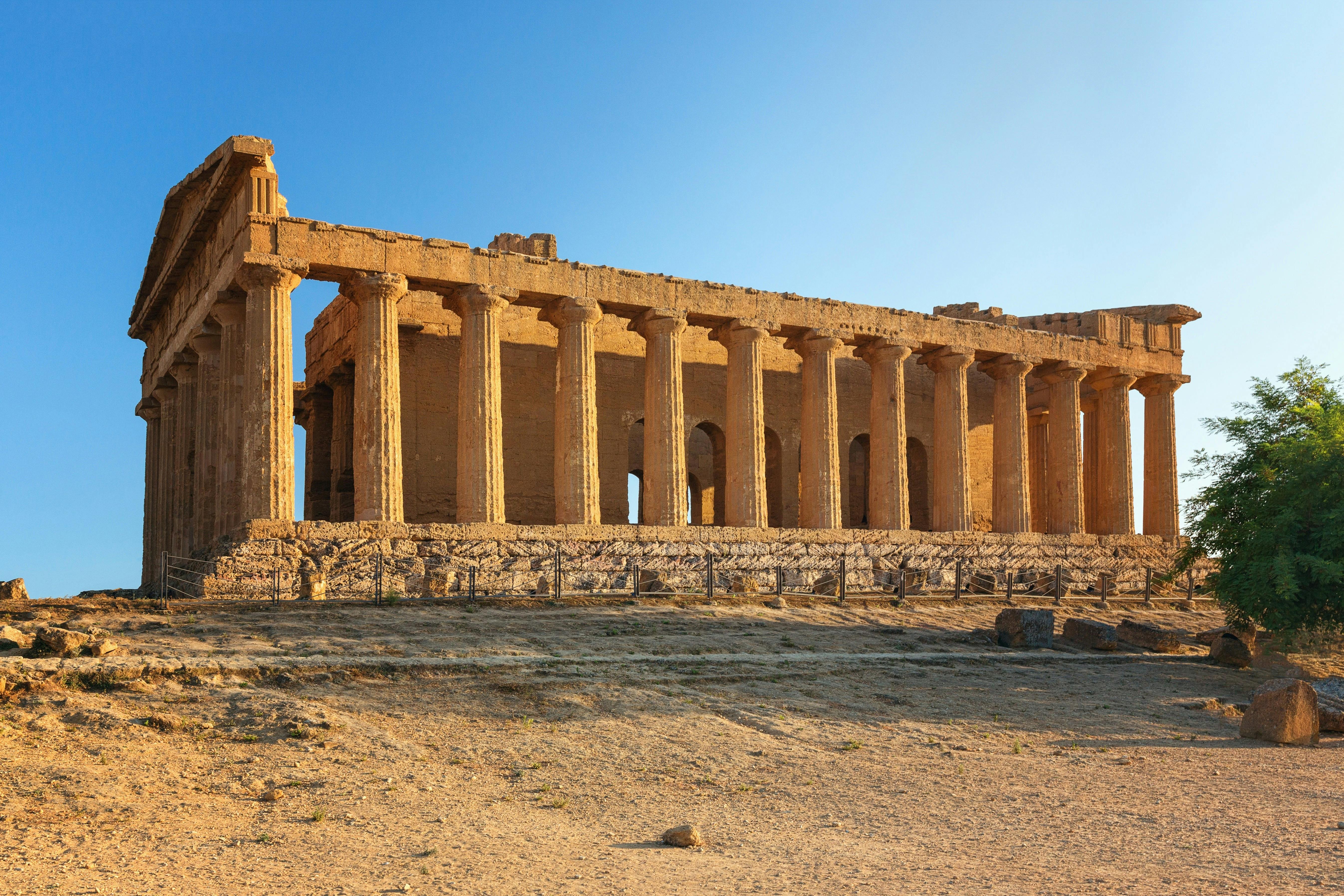Sicily’s most famous ancient Greek site, the Valley of the Temples, is just the beginning of Agrigento’s delights, and well worth the visit. Here’s a guide to fully experience the best of this spectacular site in a single day.
The most scenic way to arrive in Agrigento is by sea. The view of the Greek temples and the hilltop-city backdrop must be one of Europe’s most stunning vistas. Once on dry land, you’ll discover that the Valley of the Temples is a long ridge between the higher, modern hilltop town of Agrigento and the sea. The valley between modern and ancient towns is a peaceful green space where agriculture is interspersed with ruins and excavations. It’s where a large part of the ancient city once stood, and in fact, the ancient town (Akragas for the Greeks, Agrigentum for Romans) was more extensive than the modern one!
It’s possible to walk downhill to the archeological zone from the center of the city, but quicker and easier to take local buses (numbers 1, 2 or 3), which run frequently (less often on Sundays) from outside the railway station. Buy single or day tickets in advance from a bar or tabacchi, and ask the driver to let you off for the Valle dei Templi. Entry is free for EU citizens under 18 or over 65, and reduced for those aged 18-25.
You should allow at least three hours to explore both parts of the Valley of the Temples, and allow time for refreshment and reading breaks. Having a guidebook or a historical map in tote will help you to better understand the site. Don’t forget a bottle of water and sun protection, particularly for the summer months.

The Temple of Juno, Valley of the Temples
The eastern half of the Valley of the Temples contains the most complete and impressive ruins. The closest temple to the road is Temple A, also called the Temple of Herakles. This is the most ancient of the remaining temples at Agrigento, dating to the sixth century BC. The next temple along the ridge, the Temple of Concord (or Temple F), is the most complete, with its monumental structure largely intact due to its early conversion into a Christian church.
At the far end of the hill, there’s Temple D, also called the Temple of Hera or Juno. There are some standing columns, the remains of a huge stone sacrificial altar, and steps where the masonry still shows traces of the fires from 406 BC when Akragas was conquered and sacked by the Carthaginians.
On the western side of the road, you’ll find the remains of one of antiquity’s largest temples, the Temple of Olympian Zeus. The ambitious building was probably never completed and was likely damaged by the Carthaginian invaders. However, a model of the most convincing recreation can be seen in the archaeological museum nearby.

Temple of Concorida, Valley of the Temples
Beyond the ruins, there’s a pretty green gorge, once a fishpond for Akragas. Nowadays, the national heritage organization (FAI) has turned the valley into a charming citrus garden called the Giardino della Kolymbetra, displaying traditional types of citrus trees, plants, and irrigation methods. It makes for a refreshing and pleasant oasis away from the dusty landscape above.
If you have more time and energy, briefly explore ‘modern’ Agrigento. In fact, far from being recent, the town center is a medieval network of steep alleys. At the top lies the Duomo and at a short distance downhill, there’s one of the most significant sights of Agrigento: the church of Santa Maria dei Greci.
